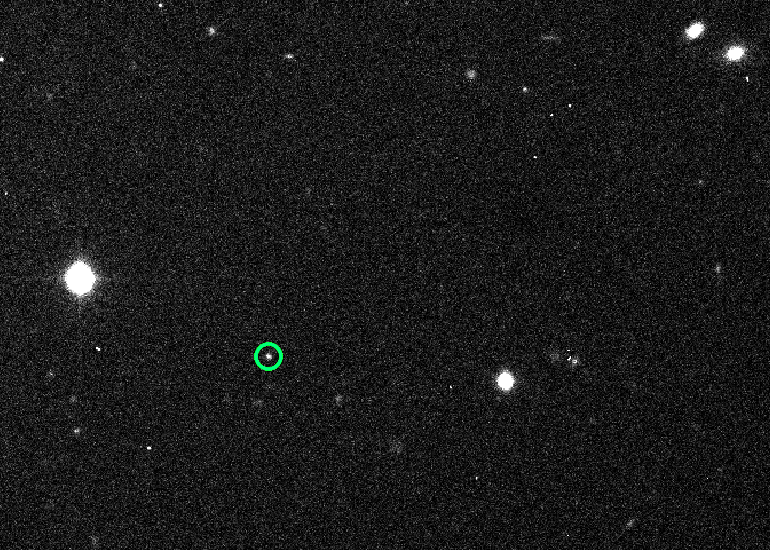S/2003 J 16 on:
[Wikipedia]
[Google]
[Amazon]
is a  This moon was once considered
This moon was once considered
natural satellite
A natural satellite is, in the most common usage, an astronomical body that orbits a planet, dwarf planet, or small Solar System body (or sometimes another natural satellite). Natural satellites are often colloquially referred to as ''moons'' ...
of Jupiter
Jupiter is the fifth planet from the Sun and the largest in the Solar System. It is a gas giant with a mass more than two and a half times that of all the other planets in the Solar System combined, but slightly less than one-thousandth t ...
. It was discovered by a team of astronomers led by Brett J. Gladman
Brett James Gladman (born April 19, 1966) is a Canadian astronomer and a full professor at the University of British Columbia's Department of Physics and Astronomy in Vancouver, British Columbia. He holds the Canada Research Chair in planetary as ...
in 2003.
is about 2 kilometres in diameter, and orbits Jupiter at an average distance of in 600 days, at an inclination
Orbital inclination measures the tilt of an object's orbit around a celestial body. It is expressed as the angle between a reference plane and the orbital plane or axis of direction of the orbiting object.
For a satellite orbiting the Eart ...
of 151° to the ecliptic
The ecliptic or ecliptic plane is the orbital plane of the Earth around the Sun. From the perspective of an observer on Earth, the Sun's movement around the celestial sphere over the course of a year traces out a path along the ecliptic agains ...
(149° to Jupiter's equator), in a retrograde direction and with an eccentricity
Eccentricity or eccentric may refer to:
* Eccentricity (behavior), odd behavior on the part of a person, as opposed to being "normal"
Mathematics, science and technology Mathematics
* Off-Centre (geometry), center, in geometry
* Eccentricity (g ...
of 0.333. It belongs to the Ananke group of retrograde irregular moons which orbit Jupiter between 19.3 and 22.7 Gm, at inclinations of roughly 150°.
 This moon was once considered
This moon was once considered lost
Lost may refer to getting lost, or to:
Geography
*Lost, Aberdeenshire, a hamlet in Scotland
* Lake Okeechobee Scenic Trail, or LOST, a hiking and cycling trail in Florida, US
History
*Abbreviation of lost work, any work which is known to have bee ...
until September 2010, when it was recovered by Christian Veillet with Canada-France-Hawaii Telescope (CFHT). However, the recovery observations of S/2003 J 16 were not reported by the Minor Planet Center until 2020, when Ashton et al. independently identified the moon in the same CFHT images taken by Veillet back in September 2010. S/2003 J 16 was also identified in observations by Scott Sheppard from March 2017 to May 2018, cumulating a long observation arc
In observational astronomy, the observation arc (or arc length) of a Solar System body is the time period between its earliest and latest observations, used for tracing the body's path. It is usually given in days or years. The term is mostly use ...
of 5,574 days (15 years) since its discovery. The recovery of S/2003 J 16 was formally announced by the Minor Planet Center on 4 November 2020.
References
{{DEFAULTSORT:S 2003 J 16 Ananke group Moons of Jupiter Irregular satellites 20030206 Discoveries by Brett J. Gladman Discoveries by Jean-Marc Petit Discoveries by John J. Kavelaars Discoveries by Rhiannon Lynne Allen Moons with a retrograde orbit